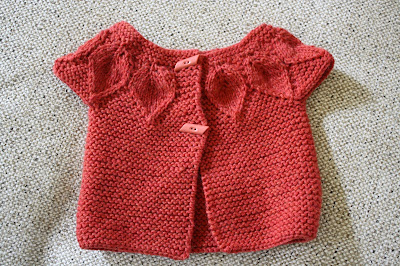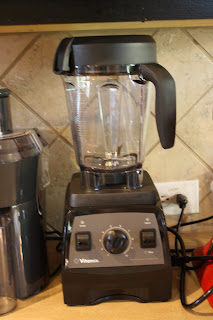After what I told you about
the dresser I refinished for Baby, I know some of you want to see the rest of the nursery, so here it is! (This is just about the stuff in the actual nursery; see the post
Baby gear for more stuff.)
For the wall color, I’d always loved gray (for bedrooms, nurseries, living rooms, bathrooms, you name it), so that’s what I went with. I made sure to bring a sample of the carpet and baseboards to the store to pick a few shades of gray that worked with the rest of the room, then used samples to get a better idea of the shade I wanted (it’s actually Valspar’s Aspen Gray; I used two gallons, at $30.98 a gallon, plus supplies). It turns out that Nate Berkus approves of my choice color, as you can see in
this segment that aired on Rachael Ray’s show last January (I had already painted by then, but felt validated that he recommended gray as a gender-neutral color). Apart from the white trim and furniture, I’ve got a few pops of turquoise for color, but I could easily go with just about any accent color at this point.


Along the top edge of three walls, we hung an alphabet I made using fleece and fabric scraps from various projects, sewed to a ribbon. It really wasn’t expensive, and I feel it livens up the place a lot. I also made a project inspired by images found on Pinterest, tracing the Quebec fleur-de-lys and the Texas lone star with puff paint and then painting over the whole thing; those are hanging over the crib (high enough that there’s no way the baby could reach them before being school-aged).
I tend to be an organized person, but in this case, I’ve decided to let go of some of my perfectionism. This is our first baby, so I don’t know how useful certain things will be; I’ve decided to just to my best to have an orderly and functional nursery and to adjust as we go. I do really like
this nursery, though! On to the furniture.
 Crib
Crib
My main concern here was that many cribs on the market are so massive that they look like wrecked ships, beached in a baby’s room. Not to mention the fact that they can easily cost several hundred to several thousand dollars! I wanted something very simple, with clean lines, white so it could go with everything, and for not too much money. I had eyed the
Davinci Jenny Lind crib, which has an antique feel, but it’s metal (I prefer wood), the casters are brass (why?), and reviews do mention unsightly warning stickers that are near impossible to remove. Then we read a lot of positive reviews about Ikea cribs (see
here for example), so we ended up going with the
Hensvik, which is a nice wooden crib for under $100, white so it goes with almost anything, AND it turns into a toddler bed. We also got the mattress from Ikea, since all their mattresses fit their cribs and it was just one less headache. Plus, because it was Ikea, assembly instructions were very clear and it was almost disappointingly easy to put together!
The important thing to keep in mind, I think, is that any crib that you buy brand new will be safe for your baby. You are free to buy one used, but then the onus is on you to see if it has been affected by any recalls.
To pre-emptively answer any questions: the stuffed animals in the top right corner are my first doll and the Engineer’s first stuffed animal; the ones in the left are a
stuffed bear I melted over and a
homemade bunny. I also made a crib rail guard based on
this tutorial, and it happened to be great practice for making buttonholes! We’re still on the fence about a mobile. They’re more for parents than babies anyway, and must be removed once the baby is about 4 months old, so we’re not sure we’ll bother. Then again, we got a simple metal frame that we could hang from the ceiling high enough to leave in place when the baby is older, so I might make a few things to hang on it with fabric scraps if I get around to it. I’m focusing on knitting first, and I might see about sewing when I’m done with that (unless someone can get me a knitting pattern for
this awesome mobile, in which case you’d have a hard time stopping me from making it).
 Rocking chair
Rocking chair
This isn’t a necessity, according to some parents, but I really wanted one. I had been drooling over the
Joya rocker, by Monte, for months, but there’s no place for me to try sitting in it in real life (the closest store that carries it in Texas is in Dallas, though it is available in Montreal and Toronto). Since I won’t buy an armchair I haven’t sat in, and since it was above our price range anyway, we decided to look closer to home. We looked at a bunch, and tried some in person (mainly at
Babies “R” Us), but all I found were rocking chairs that I did not hate, instead of rocking chairs that I liked. I almost settled for one of them, but luckily I found better! We got the
Charleston chair from Pottery Barn Kids on sale (teamed up with a coupon and, mostly, a gift from my parents). We tried it out in San Marcos and really liked it, and it looks fantastic in the nursery. We also got legs to turn it into a stationary armchair down the road, though I love rocking in it. I’m really happy with our choice! As a bonus, it’s pretty much the only seat in the house where I can relax without feeling any pelvic pain these days.

 Changing table / Low dresser
Changing table / Low dresser
We went the easy way and got a low dresser on Craigslist for $60, then added a changing pad with curved edges on top of that. Easy-peasy. Except that since we’re planning on using washcloths more than wipes, and we might be using a spray nozzle attached to the toilet for pretreating the cloth diapers, we’ve now decided to just put the changing pad on the bathroom counter and make that the changing station. We’ve got a hamper fitted with a wet bag in there for the cloth diapers; the lid shouldn’t be necessary as long as the baby is breastfed if we launder every other day. The changing table itself is far from useless, though, as it now houses linens and various baby essentials.
Note that I did not paint this white like the other furniture, because then the blinds and nursing stool would have been the only dark wood item in the room, and I was afraid they’d stick out like a sore thumb. This way, the low dresser is the same color as the blinds, so the choice looks intentional (I didn’t choose the blinds, but am not replacing them either).
The changing pad cover is something I made using
this tutorial and using a longer elastic. I love the idea of having a designated spot for the head of the baby! I also made the storage baskets using
this tutorial, though there are more options
here. With cotton at $4.90 a yard and batting at $2.80, it was a really good deal!



The frame currently propped up on the dresser is actually the guest book from the Very-Hungry-Caterpillar-themed virtual baby shower our friend Jen organized (since all our friends are in Montreal, basically). It was a really great idea and worked perfectly! She put a lot of effort into it and even hand-painted the cookies below –aren’t they the best? So a big thank you to Jen, as well as to the good people at Pinterest and Skype, for making this possible.

 Tall dresser and bookcase
Tall dresser and bookcase
The dresser is something I found on Craigslist, also for $60. I measured it to make sure it fit in the closet (since we won’t be hanging much in it for a baby, and there isn’t that a lot of space in the room),
then I painted it, along with the bookcase ($36 in a second-hand furniture store). The top shelves house my childhood stuffed animals, most of which are not safe for infants, but I had no place else to put them! The bottom shelves of the bookcase are intentionally empty, because we expect to fill them with books and toys. (We won’t insist on handmade organic wooden toys, but hopefully we won’t receive too much
cheap plastic crap or character effigies – I hope our relatives know us well enough to steer clear of anything with batteries, at least. I’m dreaming of a little kitchen set with felt produce… We plan on using an online wish list when the baby is a little older, but sometimes grandparents just can’t help themselves!)
 Light fixture
Light fixture
Well, we didn’t do anything there after all. I really wanted to make a drum light fixture using
this tutorial, but when I realized how thin embroidery hoops are, I decided I could not solidly install screws into it without coming out the other side. I haven’t found any nice light fixture within our limited budget, either, so I’ll have to make do with what’s already there. I’m a little bummed about it, because Lord knows I hate every light fixture in our house and I wanted to take this opportunity to change one, but on the bright side, the baby won’t care.





















































